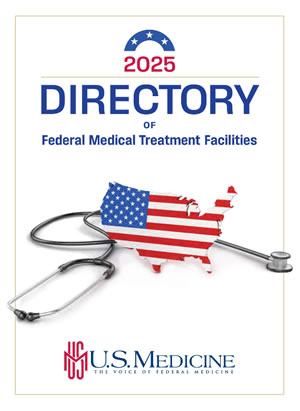Survey Offers Clues for Addressing Racial Disparities

Johanne Eliacin, PhD, Research Scientist at VA HSR&D Center for Health Information and Communication
INDIANAPOLIS — Older Black Americans are almost twice as likely as white Americans to be affected by Alzheimer’s and related dementias, with 21.3% of Black Americans aged 70 and older living with the disease.
Yet, lack of awareness of Alzheimer’s disease (AD) among Black Americans might undermine their ability to identify potential AD, according to authors of a new study examining Black Americans’ perceptions and knowledge of AD and views of a healthy brain. The findings, they say, can help contribute to the development of effective and culturally sensitive strategies to address racial disparities in AD.
In their study published in Patient Education and Counseling Innovation, the researchers sought to learn how much members of that community already know about AD and what they view as gaps in the information they have about AD, said Johanne Eliacin, PhD, a research scientist at VA HSR&D Center for Health Information and Communication and the study’s first author.
“We also wanted to learn about what drives individuals to volunteer for AD research studies and what could be potential barriers for their participation,” Eliacin said. “Specifically, we wanted to reach out to groups of individuals who are historically underrepresented in research studies, such as clinical trials focusing on AD. These are individuals with no prior experience participating in research studies, Black men, and individuals with low SES or who have less than 14 years of education. We wanted to learn more about their experiences so that we can develop culturally appropriate strategies that are acceptable to them, that could help us better engage different groups within the community in AD research.”
In conducting the study, Eliacin and her colleagues used an inclusive collaborative approach by partnering with the Indiana Alzheimer’s Disease Research Center (IADRC) Community Advisory Board. The IADRC is one of 37 centers funded by the National Institute on Aging to translate research advances into improved diagnosis, care and treatment for people with Alzheimer’s disease and other types of dementia. The IADRC Community Advisory Board consists of diverse members from the Indianapolis metro area, said Eliacin, who also has appointments with the National Center for PTSD, Boston VA Healthcare; Regenstrief Institute; and the Alzheimer’s Disease Research Center and Department of General Internal Medicine and Geriatrics at Indiana University School of Medicine.
The researchers began by conducting qualitative interviews with members of the Black community, CAB members and individuals with lived experiences participating in AD research to identify what is important to them when it comes to research participation. Based on the results of the interview, they drafted the survey questions, which were piloted and finalized with community members. The survey was then administered to 258 older Black individuals who were 55 years old or older. Finally, to contextualize and triangulate the survey results, they conducted qualitative interviews with a subset of 29 survey completers.
“We found that, despite ongoing efforts to spread information about Alzheimer’s, there are still gaps in knowledge about the disease within the Black community,” Eliacin told U.S. Medicine. “Many participants said they didn’t know much about Alzheimer’s but were eager to learn more. They suggested that educational efforts should start early in life, involve families and address broader issues like education, housing, safe neighborhoods, and access to healthcare. Participants were already involved in some activities to support brain health, but there’s room to increase awareness about how to prevent Alzheimer’s.”
A Regenstrief Institute press release included some of the responses:
- One study participant told the study team, “I don’t think too many [people] really think about it as much unless it hits them personally. … Some Black people look at it like mental illness; [it] is taboo.”
- Another observed, “I think that there’s whispers about it. … But I don’t think it’s well-known, and I don’t think it’s known as how truly dangerous it is. … The Black community doesn’t fully understand, I think, the implication. Not like cancer.”
- A third said, “People come into our community and are clueless about who we are and what we’re all about. And have not made any effort in learning about our community but only relying on what the media has put in front of them, as this is what the African-American community should look like. And, if that’s your only source about the African-American community, you are extremely ignorant. Well, you need to know that you … to overcome years and years of a group of people being taken advantage of in all different ways. For instance, are you familiar with the wealth gap? … Education gap? … The health gap? … Social justice issues. … And if you have a problem with those things, you’re not gonna do well within an African-American environment, because it’s gonna show.”
Eliacin said their study’s findings have several implications that could help promote AD awareness and brain health. “At a policy level, interventions are needed to increase equitable access to healthcare care, to facilitate access to community resources that foster well-being, and to address structural and socio-determinants of health,” she explained. “Specifically, participants underscored that brain health requires long-term socioeconomic investment in communities and overall well-being across the lifespan. Thus, to address risk of AD and reduce the burden of this disease on society, interventions may need to go beyond individual, healthcare and aging solutions.”
“Researchers and health educators have opportunities to meet participants’ expressed need for AD education and to develop comprehensive and targeted approaches that promote brain health in Black communities across the life span,” Eliacin continued. “Future studies could investigate how to best work with community partners to increase knowledge of AD, research participation and self-efficacy to manage AD risk factors.”
Based on study participants’ perceptions, the research team proposed the following strategies to raise awareness of Alzheimer’s in those communities:
- Invest in the Black community’s well-being throughout the lifespan.
- Proactively reach out to the Black community.
- Integrate information about Alzheimer’s disease and brain health into broader culturally appropriate wellness campaigns.
- Improve health, healthcare and research equity.
While the study especially focuses on Black adults, Eliacin noted that they were not the only group at increased risk of Alzheimer’s—veterans face a higher risk compared to civilians, adding that further AD research is needed in veterans as well.
“We do not fully understand whether diagnostic tools and treatments tested in civilian populations are equally as effective in veterans—which is concerning with the newly approved FDA Alzheimer’s disease drugs,” she advised. “To answer these key questions, we need to collaborate more closely with veterans to increase their participation in Alzheimer’s disease research studies so we can all learn to how to detect this disease as early as possible and ensure veterans are included in the testing and development of effective AD therapies. “
- Eliacin, J, Polsinelli, A, Cameron, K A, Saykin, A J, & Wang, S (2024). Black Americans’ perceptions of Alzheimer’s disease, a healthy brain, and strategies for brain health promotion. PEC innovation, 4, 100282. https://doi.org/10.1016/j.pecinn.2024.100282


